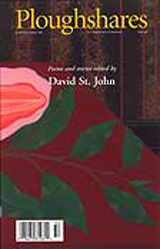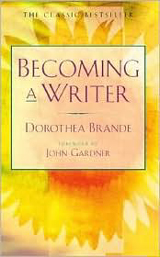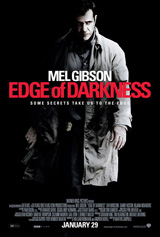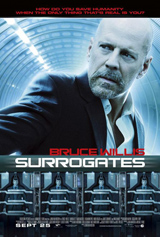As a magazine editor and writer, I’ve been reading press releases for more than a decade. This week, Southern California Review, where I serve as editor-in-chief, named the winners of the 2008 Ann Stanford Poetry Prize, and now I find myself on the other side of the mutually beneficial yet at-times antagonistic media-marketing relationship.
Yet drafting a press release utilizes the same skills and strategies found in journalism.
First, you need an attention-grabbing headline that makes your reader (a journalist or editor) want to read more. The headline should include keywords that quickly summarize what the release is about and create visibility in search engines. Also write a succinct subhead of a couple of lines or sentences that offers additional information.
The body of the press release should be structured in the same inverted pyramid that you would use in a news story—i.e., put the most important information at the top of the story. Borrow another journalism tool—the five W’s (and one H)—and make sure you’ve answered the questions who, what, when, where, why, and how in the first paragraph. Subsequent supporting information should include an effective expert quote. Because your content is aimed at news professionals, use the style that they do—AP.
There are some elements to a press release that differ from news writing, however. The announcement should be printed on company letterhead. At the very top of the page, type “FOR IMMEDIATE RELEASE” in all capital letters if there is no embargo on the information. Under this, offer a contact name and ways to get in touch with this person, whether by mail, phone, email, etc.
The first body paragraph should be preceded by a dateline that includes the city in which the announcement was released and the date. Following the body of the release, include a paragraph about your company or organization. This most often consists of a boilerplate description.
Finally, there are a few formatting conventions specific to press releases. Keep it brief and to the point—an announcement should run one or two, or sometimes three, pages. If your release does run longer than one page, center “-more-” at the bottom of the first page and place an abbreviated version of the headline followed by “page 2” in the top right-hand corner of subsequent pages. At the very end of the release, center “###” to indicate that there is no additional information.
Press release checklist
Journalism basics:
- attention-grabbing headline
- inverted pyramid-put the most important information at the top of the story
- five W’s (and one H)-who, what, when, where, why, and how
- expert quotes
- AP style
Press release specifics:
- company letterhead/logo
- “FOR IMMEDIATE RELEASE”
- contact information-name, address, phone and fax numbers, email address, and website
- dateline
- boilerplate “about” paragraphs
Specialized formatting:
- one to three pages
- “-more-” at end of first page; abbreviated headline and page number at top of second and third pages
- “###” at end of release
I will post the sample press release I drafted to announce the winners of the 2008 Ann Stanford Poetry Prize after the embargo has been lifted.
In the meantime, if you have additional tips on how to write a press release, please share.
Addendum (Thursday, July 17, 2008): Here at last is the final press release I’ve been working on:
FOR IMMEDIATE RELEASE
Contact: Annlee Ellingson, editor-in-chief, Southern California Review
email: scr@college.usc.edu
LewEllyn Hallett Wins 2008 Ann Stanford Poetry Prize
The 20th annual contest awards $1,000 for “Little Bird,”
which will be published in Southern California Review in fall 2008
Los Angeles—July 17, 2008—LewEllyn Hallett has won the 2008 Ann Stanford Poetry Prize. Sponsored annually for more than 20 years by Southern California Review (SCR), the prize awards $1,000 to the winning poet. Hallett’s poem “Little Bird” will also be published in SCR’s fall 2008 issue.
Poet Christopher Buckley, who judged the competition, admired “Little Bird’s” “essential lyric distillation of image and emotion in a supremely accessible music—a cherishing of life and celebration of meaning.”
Marilyn Annucci has won the second prize worth $200 for her poem “The Longer My Dog Stops, the More I Am Allowed to Watch,” and Kelly Madigan Erlandson has been awarded the third prize worth $100 for “Phosphorescence.”
LewEllyn Hallett was raised in Atlanta, Ga., and after sojourning in almost a dozen states, settled in New Hampshire. She received her degree in creative writing from the University of New Mexico and has earned a living as a writer of advertising copy, magazine and newspaper articles, public relations and business materials. She has also worked as a minister and nonprofit administrator, including program director for New Hampshire Writers’ Project.
Hallett currently volunteers on the Project’s program committee and on the advisory board for New Hampshire Poetry Out Loud, writes freelance articles and works for New Hampshire Public Radio as assistant to the president. She lives in Bow, N.H., with her husband and two teenaged daughters and has not pursued publication of her poetry and fiction until now.
Little Bird
for my daughter Lily at 13
I held finches in my hand, weightless,
twig of leg between thumb and forefinger
almost too fine for banding
I felt the peck of a pea-sized heart against my palm
shudder of struggle, then stillness
hesitation at release, then whipping of wings
fury of escape from perch to wire
puff of breath, rapid pumping of a scant teaspoon of blood
Consuming energy in a vessel without substance
Lily, little bird,
brilliant fire burns between her white temples
a heart too huge to bind
flutters in the narrow cage of her ribs
the wings of her shoulders and delicate wrist
encircled by the band of my fingers
fly relentlessly from task to task
Magnitude of life and purpose in a tiny frame
God has chosen the weak things to confound the mighty
© 2006 LewEllyn Hallett
About the Ann Stanford Poetry Prize
Ann Stanford (1916-1987)—a poet, editor, translator, scholar, and educator—was born in La Habra, Calif. Aside from attending Stanford as an undergraduate, she lived in Southern California her whole life. She earned two master’s degrees in journalism and English as well as a doctorate in English from the University of California at Los Angeles. She taught at California State University (CSU), Northridge, for 25 years and in 1974 was the first woman named Outstanding Professor of the Year in the CSU system.
Stanford’s publications include poetry collections The Weathercock (1966), The Descent (1970), In Mediterranean Air (1977), and the critical study Anne Bradstreet: The Worldly Puritan. She also edited the anthology The Women Poets in English. Her collected poems, Holding Our Own, edited by David Trinidad and Maxine Scates, was published in 2001. She received numerous awards for her poetry, including the Shelley Memorial Award, the DiCastagnola Award from the Poetry Society of America, two fellowships from the National Endowment for the Arts and an Award in Literature from the National Institute of Arts and Letters.
Southern California Review has awarded the Ann Stanford Poetry Prize annually for more than 20 years. The deadline for the 2009 contest is December 31, 2008. Entry forms and more information can be found at http://www.usc.edu/scr.
About Southern California Review
Southern California Review (SCR) is the student-run biannual literary journal of the Master of Professional Writing (MPW) Program at the University of Southern California (USC). Formerly known as the Southern California Anthology, it has been publishing fiction and poetry since 1982 and now also accepts submissions of creative nonfiction, plays and screenplays. Printed every October and April with original cover artwork, every issue contains new, emerging and established authors. More information on submissions, contests and subscriptions can be found at http://www.usc.edu/scr.
About the Master of Professional Writing Program
USC’s MPW Program offers a multi-genre curriculum with classes in fiction, nonfiction, screenwriting, TV writing, playwriting and poetry. The faculty includes esteemed writer-practitioners, and the emphasis is on preparing writers for successful careers in publishing, film, television and technical writing as well as teaching. USC’s proximity to the cultural and entertainment resources of Los Angeles provides a rich environment for writers. More information and online applications can be found at http://www.usc.edu/mpw.
###
References
Aten, Luan, “How To: Write a Press Release,” Eclipse E-zine, http://www.lunareclipse.net/pressrelease.htm (accessed July 10, 2008).
Press-release-writing.com, “Press Release Template,” press-release-writing.com, http://www.press-release-writing.com/press-release-template.htm (accessed July 11, 2008).
Stoller, Bill, “How to Write a Great Press Release: A Sample Press Release Template,” Stoller and Bard Communications, http://www.publicityinsider.com/release.asp (accessed July 10, 2008).
WikiHow, s.v. “How to Write a Press Release,” http://www.wikihow.com/Write-a-Press-Release (accessed July 10, 2008).
Caught in the ’Net
Just how important is good spelling, anyway?







